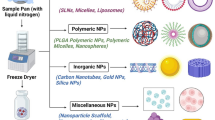Abstract
Brucine has good anti-tumor effects, on both liver cancer and breast cancer. It has bioavailability of 40.83%. Since the bioavailability of the drug is low, an alternative method to increase its bioavailability and solubility is by changing the drug into glassy form. We used Differential Scanning Calorimetry (DSC) for studying the glass forming ability of the drug. Brucine was found to be a very good glass former glass transition temperature 365 K. Based on the DSC analysis we have used broadband dielectric spectroscopy (BDS) for studying the drug in the super cooled and glassy state. BDS is an effective tool to probe the molecular dynamics in the super cooled and glassy state. Molecular mobility is found to be present even in the glassy state of this active pharmaceutical ingredient (API) which is responsible for the instability. Our aim is to study the factors responsible for instability of this API in amorphous form. Cooling curves for dielectric permittivity and dielectric loss revealed the presence of structural (α) and secondary relaxations (β and γ). Temperature dependence of relaxation time is fitted by Vogel–Fulcher–Tammann equation and found the values of activation energy of the α relaxation, fragility and glass transition temperature. Paluch’s anti correlation is also verified, that the width of the α-loss peak at or near the glass transition temperature Tg is strongly anticorrelated with the polarity of the molecule. The larger the dielectric relaxation strength Δε (Tg) of the system, the narrower is the α-loss peak (higher value of βKWW).











Similar content being viewed by others
References
Chinese Pharmacopoeia Committee Pharmacopoeia of the People’s Republic of China (Beijing Shi: Chemical Industry Press Beijing) (2005)
J Chen, W Hu, Y Q Qu, J Dong, W Gu, Y Gao, Y Fang, F Fang, Z P Chen and B C Cai Fitoterapia 193 (2013)
X-K Deng et al J. Ethnopharmacol. 106(2) 179 (2006)
J Qin Int. J. Nanomed. 7 369 (2012)
Lipinski. Am. Pharm. Rev. 5 82 (2002)
A K Dantuluri, A Amin, V Puri and A K Bansal Mol. Pharm. 8 814 (2011)
B C Hancock and M Parks Pharm. Res. 1 7397 (2000)
E Fukuoka, M Makita and S Yamamura Chem. Pharm. Bull. 37 1047 (1989)
Y Aso, S Yoshioka and S Kojima J. Pharm. Sci. 89 408 (2000)
U Sailaja, M Shahin Thayyil, N S Krishna Kumar and G Govindaraj J. Pharm. Anal. 6 165 (2016)
D Zhou, G G Z Zhang, D Law, D J W Grant and E A Schmitt Mol. Pharm. 5 927 (2008)
C Bhugra and M J Pikal J. Pharm. Sci. 97 1329 (2008)
K Adrjanowicza et al Eur. J. Pharm. Sci. 38 395 (2009)
U Sailaja, M Shahin Thayyil S and N S Krishna Kumar Eur. J. Pharm. Sci. 49 333 (2013)
U Sailaja, M Shahin Thayyil, IOSR. J. Pharm. 2 479 (2012)
M Vogel and E Rossler J. Phys. Chem. B 104 4285,1.1.2 (2000)
S Havriliak and S Negami Polymer 161 (1967)
G P Johari, S Kim and R M Shanker J. Pharm. Sci. 94 2207 (2005)
F Kremer and A Schonhals Broadband Dielectric Spectroscopy (Berlin: Springer) Vol 7.4, p 248 (2003)
U Sailaja, M Shahin Thayyil, N S Krishna Kumar, G Govindaraj and K L Ngai Eur. J. Pharm. Sci. 99 147 (2017)
R Kohlrausch Theorie des elektrischen Rückstandes in der Leidner Flasche. Annalen der Physik und Chemie 91 56, 179 (1854)
G Williams and D C Watts Non-symmetrical Dielectric Relaxation Behavior Arising from a Simple Empirical Decay Function. Trans. Faraday Soc. 66 80–85. https://doi.org/10.1039/tf9706600080 (1970)
Paluch M, Knapik J, Wojnarowska Z, Grzybowski A and Ngai K L Universal Behavior of Dielectric Responses of Glass Formers: Role of Dipole–Dipole Interactions. Phys. Rev. Lett. 116 (2016)
Acknowledgements
Afzal acknowledges the financial support from UGC, for awarding Minor Research Project (MRP(S)/,13-14/KLCAO64/UGC-SWRO), award of ‘FLAIR’ National Internship by Director of Collegiate Education, Kerala. Afzal thank Dr. Jayant Kolte, BDS lab, IIT Bombay, Dr. Prajit Chandran and Shirin Banu of T.M. Govt. College Tirur for support.
Author information
Authors and Affiliations
Corresponding author
Rights and permissions
About this article
Cite this article
Afzal, A., Shahin Thayyil, M., Sulaiman, M.K. et al. Dielectric relaxation studies in super-cooled liquid and glassy phases of anti-cancerous alkaloid: Brucine. Indian J Phys 92, 565–573 (2018). https://doi.org/10.1007/s12648-017-1139-3
Received:
Accepted:
Published:
Issue Date:
DOI: https://doi.org/10.1007/s12648-017-1139-3




